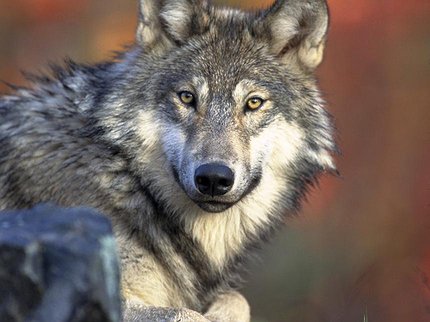Endangered Species Act hits 50 as legislators questions success
R. HANS MILLER | Hagadone News Network | UPDATED 2 years AGO
Managing Editor Rob Miller is a 4-year U.S. Army veteran who grew up in Western Montana in a community about the size of Soap Lake. An honors graduate of Texas State University, he enjoys spending time with his wife, Brandee, and their three dogs, Draco, Pepper and Cinnamon. He has one son, William. During his free time, he enjoys photography, video games, reading and working on the house he and his wife bought in Ephrata. He is passionate about the First Amendment and educating communities. | December 29, 2023 3:25 PM
WASHINGTON, D.C. — Enacted in 1973, the Endangered Species Act turned 50 in 2023 and the U.S. Fish and Wildlife Service reports that the ESA had been effective in wildlife conservation and has saved about 99% of the species under its care, including several in Washington state. However, Congress is looking at whether the legislation goes far enough to protect species and build up those species’ populations enough to remove them from the Endangered Species List.
“As we mark the 50th anniversary of the ESA, one word comes to mind and it’s ‘failure,’” said Congressman Dan Newhouse, R-Washington. “Earlier this year Chairman Westerman and I launched an ESA Working Group to examine the law and address these failures. A recovery rate of less than 3% is a call to action on reforming the ESA.”
Bruce Westerman, R-Arizona, serves as vice-chair of the Congressional Western Caucus, which Newhouse serves as primary chair.
An ESA workgroup set up by the caucus includes 10 congresspeople from throughout the U.S., mostly Republicans.
U.S. Fish and Wildlife defended the ESA in July during a hearing questioning the act’s viability. A witness at the congressional hearing, USFW Director Martha Williams, said the ESA is vital to protecting species, and while species may not be delisted easily, they are preserved for the most part by protecting the existing populations of endangered animals.
“Through this law, Congress set a public policy to address the loss of biodiversity and prevent species extinctions. The ESA turns 50 this year. A look back at our country’s accomplishments under the Act demonstrates that the ESA achieves its fundamental purpose. Moreover, the Federal government and its partners are continually evolving and improving how we implement the law for people and species. The ESA remains as important today as it was when it was enacted, arguably even more so,” Williams said at the time.
Historically, the ESA is not the first legislation to work to protect animals at risk of disappearing. The Lacey Act, Migratory Bird Treaty Act, Pittman-Robertson Act, National Wildlife Refuge Administration Act of 1966 and Endangered Species Preservation Act of 1966 all worked toward similar goals, though the ESA has broader protections.
According to USFW, the ESA currently protects 1,662 species in the U.S. and 638 foreign species. Challenges endangered plants and animals face include invasive species, loss of habitats and climate change.
In Washington state, 19 animals are listed as endangered and dozens more as threatened under the ESA. Among the endangered are woodland caribou, Taylor’s checkerspot butterflies, pygmy rabbits and gray wolves.
On Dec. 15, members of the Congressional Western Caucus introduced the ESA Flexibility Act in an effort, Newhouse said, to reform the law and grant leeway to USFW in protecting animals without harming the economy or negatively impacting landowners.
“I’m proud to join Western Caucus Vice Chair Stauber in re-introducing this legislation to provide the Fish and Wildlife Service with additional flexibilities in implementing regulations to recover species while avoiding actions detrimental to landowners. Western Caucus members will continue to prioritize reforming the ESA to make sure the law works better for both species and rural America,” Newhouse said.
R. Hans “Rob” Miller may be reached at [email protected].
ARTICLES BY R. HANS MILLER

Ferguson, GOP submit supplemental budgets
OLYMPIA — Washington Governor Bob Ferguson has released his proposed supplemental budget for the upcoming legislative session which is set to start Jan. 12. The governor submits his proposal and the legislature sets their own priorities as a budget is worked out. “I’m providing a road map to the legislature,” Ferguson said during a Tuesday press conference. “This is, of course, the first step in a conversation about how best to balance our budget. Legislators will, of course, have their own ideas, and obviously, I've had conversations with leadership in recent weeks regarding my proposed budget. I'm looking forward to continuing to work with them and all members, of course, of the legislature as this proposed budget moves over to the legislative branch.”

Local group holds holiday give-away
MOSES LAKE — Moms Helping Moms of Grant County – a Facebook group that has grown to include parents of both sexes and people of all ages – held a Christmas give-away event at Rick’s in Moses Lake last week.

WSP warns of scams in wake of trooper's death
OLYMPIA — The Washington State Patrol is asking the public to respect the family’s privacy and to be mindful of potential scams after Trooper Tara-Marysa Guting was killed in a roadside accident near Tacoma Friday. “Though we are grateful for the intended kindness and support, the Washington State Patrol does not accept monetary donations from the public,” said WSP Director of Public Affairs in a statement released Tuesday.



